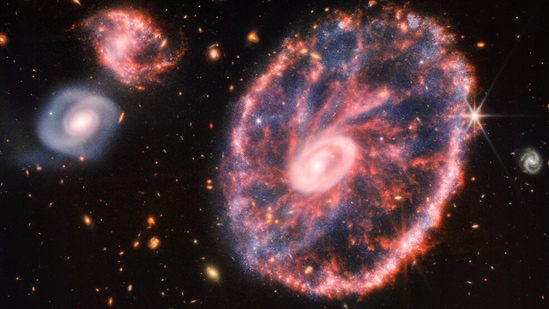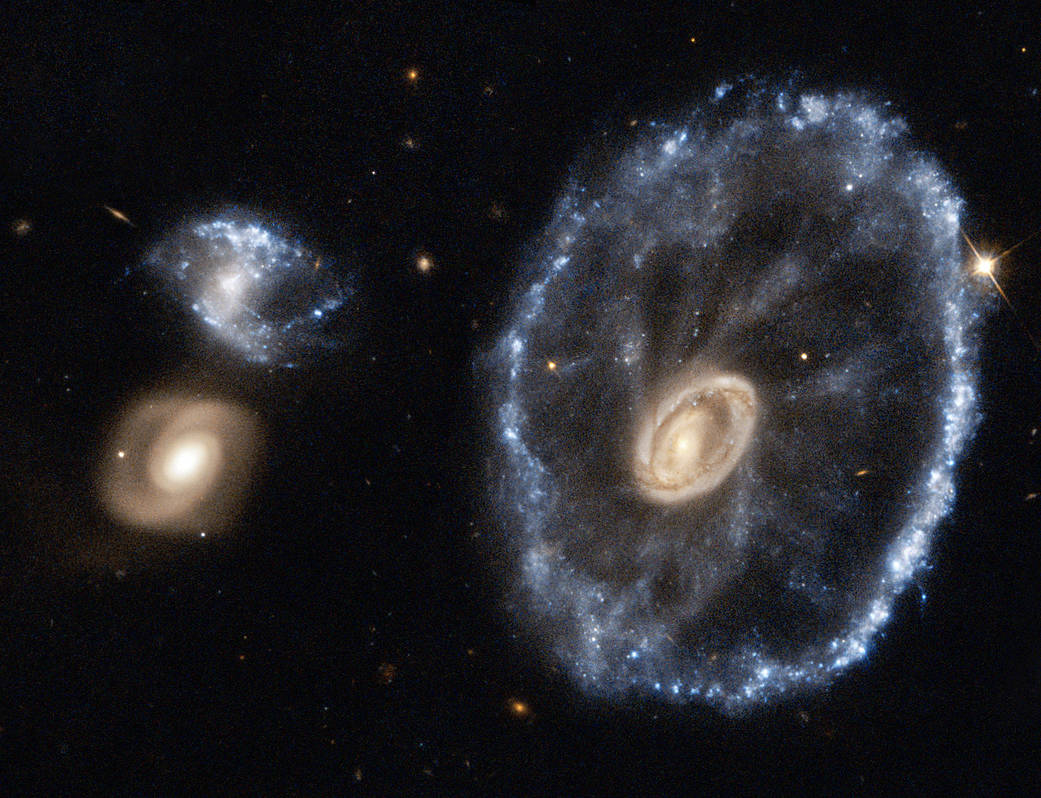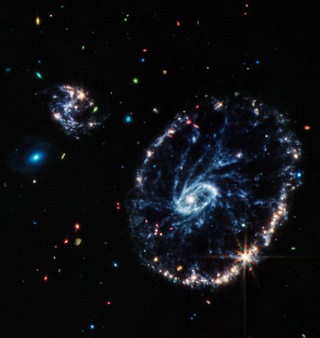Why are James Webb Telescope's images of Cartwheel galaxy hard to miss
The Hubble telescope sought to examine the galaxy, but huge amounts of dust hindering its line of sight proscribed its in-depth imagery. Thus, the galaxy remained a mystery for so long.
The James Webb Space Telescope (JWST) has now dived into the chaos of the Cartwheel galaxy. On Tuesday, the National Aeronautics & Space Administration (NASA) released a detailed image of the Cartwheel galaxy with two smaller companion galaxies in the background of many other galaxies. Using its powerful infrared camera, JWST capture shows additional details about star formation and the central black hole of the galaxy.

Releasing the photos on Twitter, NASA said, “Webb uniquely offers not just a snapshot of the galaxy’s current state, but also a peek into its past & future.” Mesmerized by the scenery, it wrote, “it’s time to reinvent the wheel”.
Why is the Cartwheel galaxy’s imagery peculiar?
In 1941, Swiss astronomer Fritz Zwicky first discovered the Cartwheel Galaxy. He termed it as “one of the most complicated structures”. This elusive galaxy is about 500 million light years away in the Sculptor constellation of the southern sky.
The Hubble telescope sought to examine the galaxy, but huge amounts of dust hindering its line of sight proscribed its detailed imagery. Thus, the galaxy remained a mystery for so long. According to the statement released by NASA, the galaxy’s bright core contains a tremendous amount of hot dust. The outer ring has expanded for about 440 million years and is dominated by star formation and supernovas. This ring expands to plough into surrounding gas, which triggers star formation.

Why is it named Cartwheel?
Appearance of the galaxy is much like that of the wheel of a wagon. The arms spreading out from a central core resembles the spokes of a cartwheel. The appearance is caused because of a violent high-speed collision between a massive spiral galaxy and a smaller galaxy not visible in this image. Before the collision, the galaxy is considered to have been a normal spiral galaxy like the Milky Way.
How different are the features of this galaxy from others spotted till now?
The Cartwheel Galaxy is around 150,000 light years across, not too discrete than our Milky Way galaxy. Milky Way galaxy has a visible diameter of between 100,000 and 200,000 light years. Even Webb’s Mid-Infrared Instrument (MIRI) data shows similarity with milky way galaxy. “It (MIRI) reveals regions within the Cartwheel Galaxy rich in hydrocarbons and other chemical compounds, as well as silicate dust, like much of the dust on Earth”, disclosed NASA.

However, the Cartwheel Galaxy’s two rings—a bright inner ring and a surrounding, colourful ring—which gives it the name ‘ring galaxy’, differentiates it from other spiral galaxies like ours. “These two rings expand outwards from the centre of the collision, like ripples in a pond after a stone is tossed into it”, says NASA. “The galactic collision has had an interesting effect on the shape and structure of the Cartwheel”, it added.






